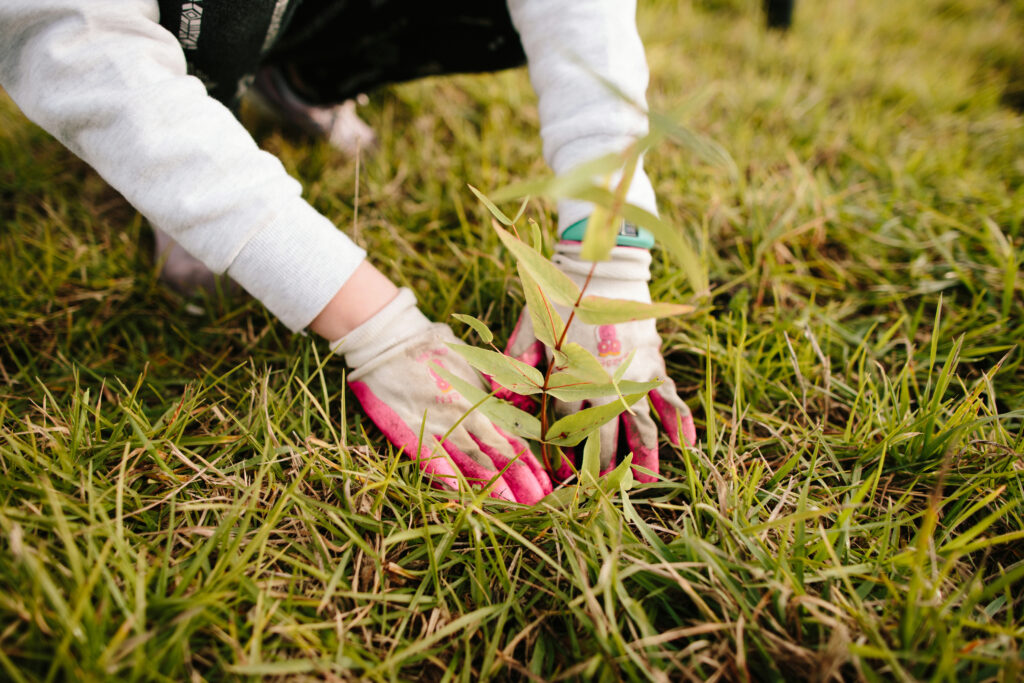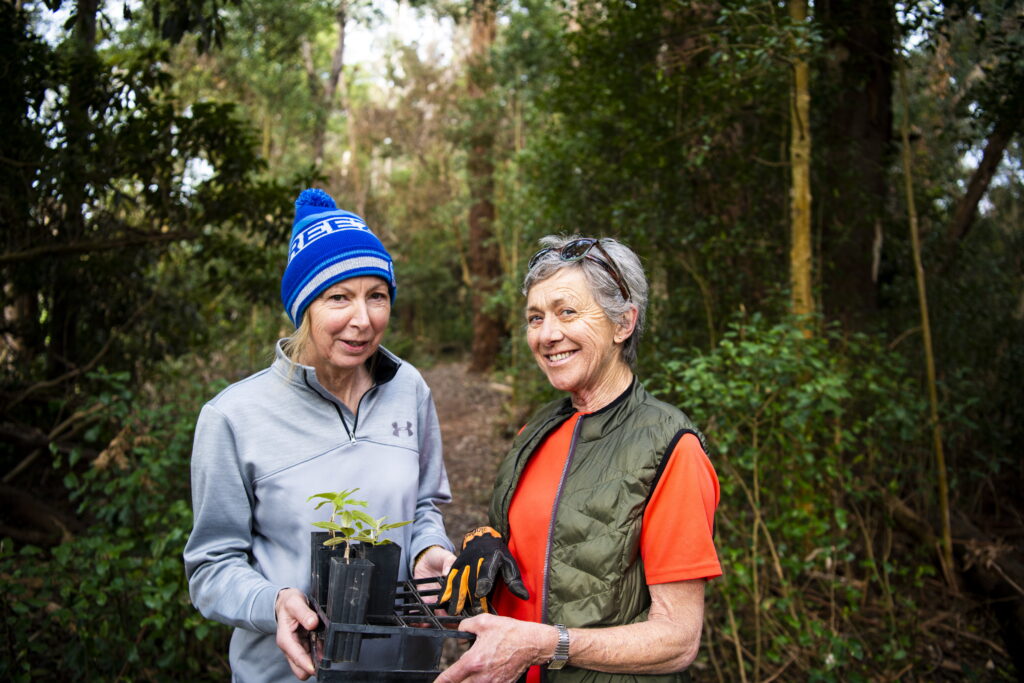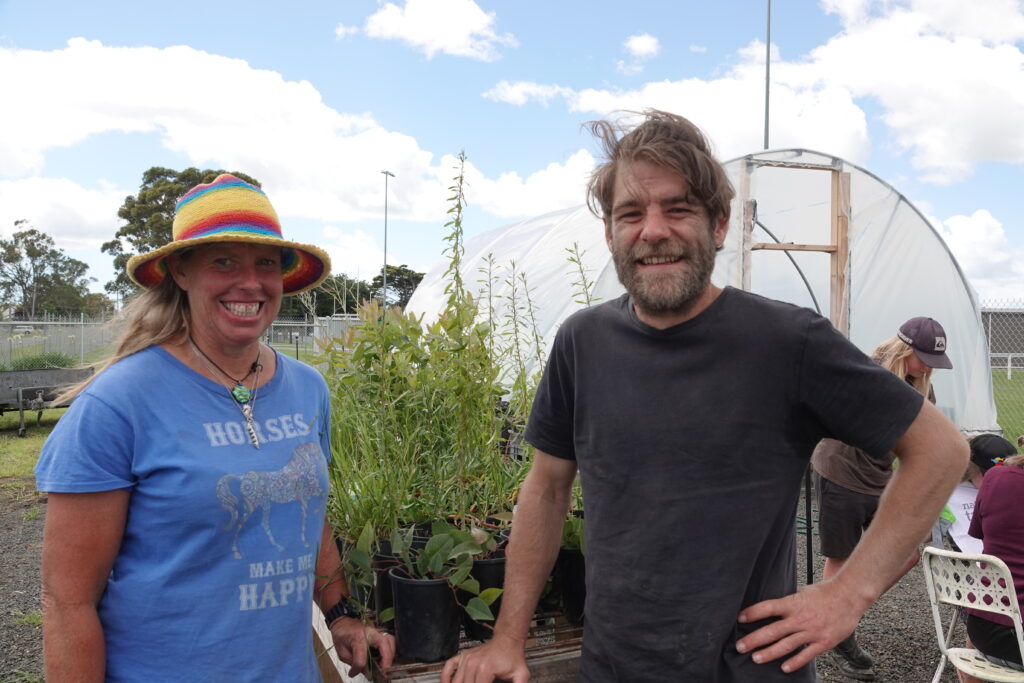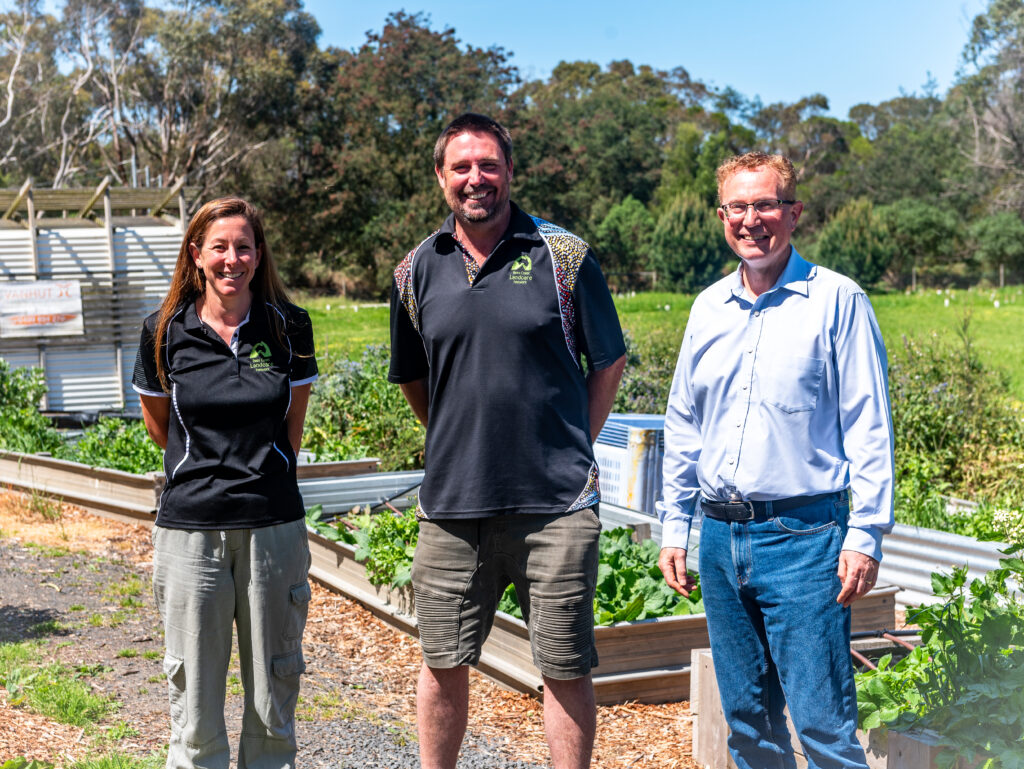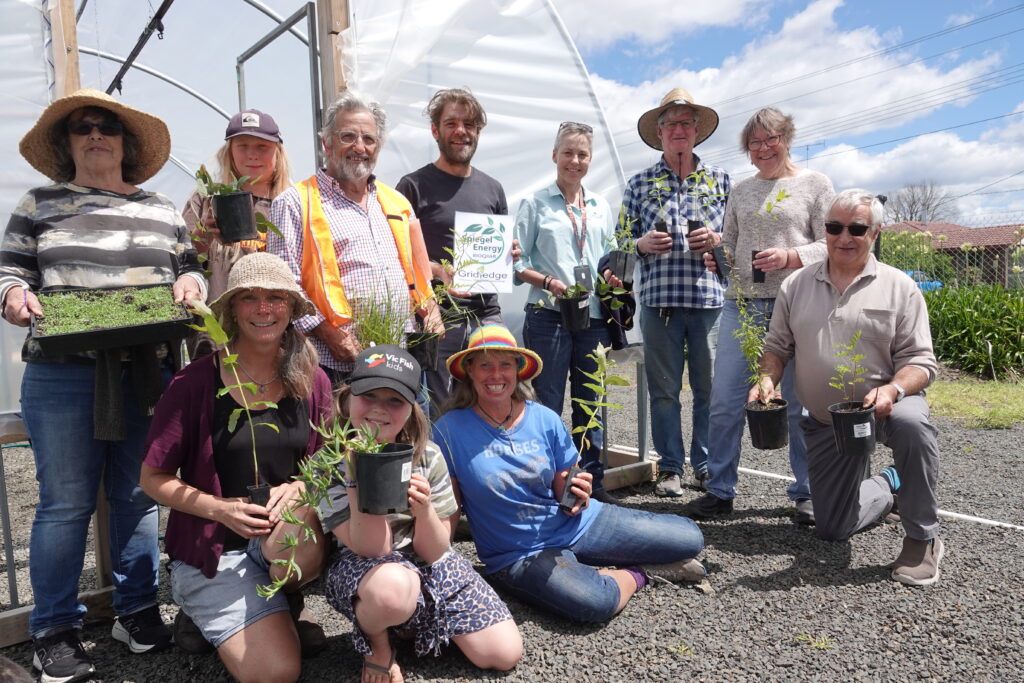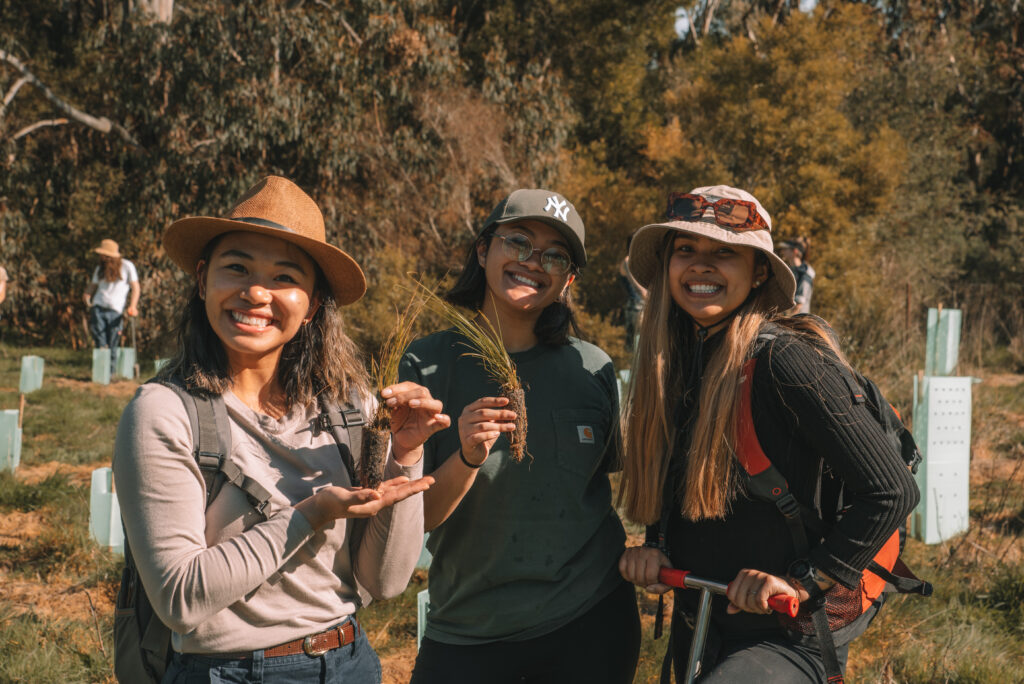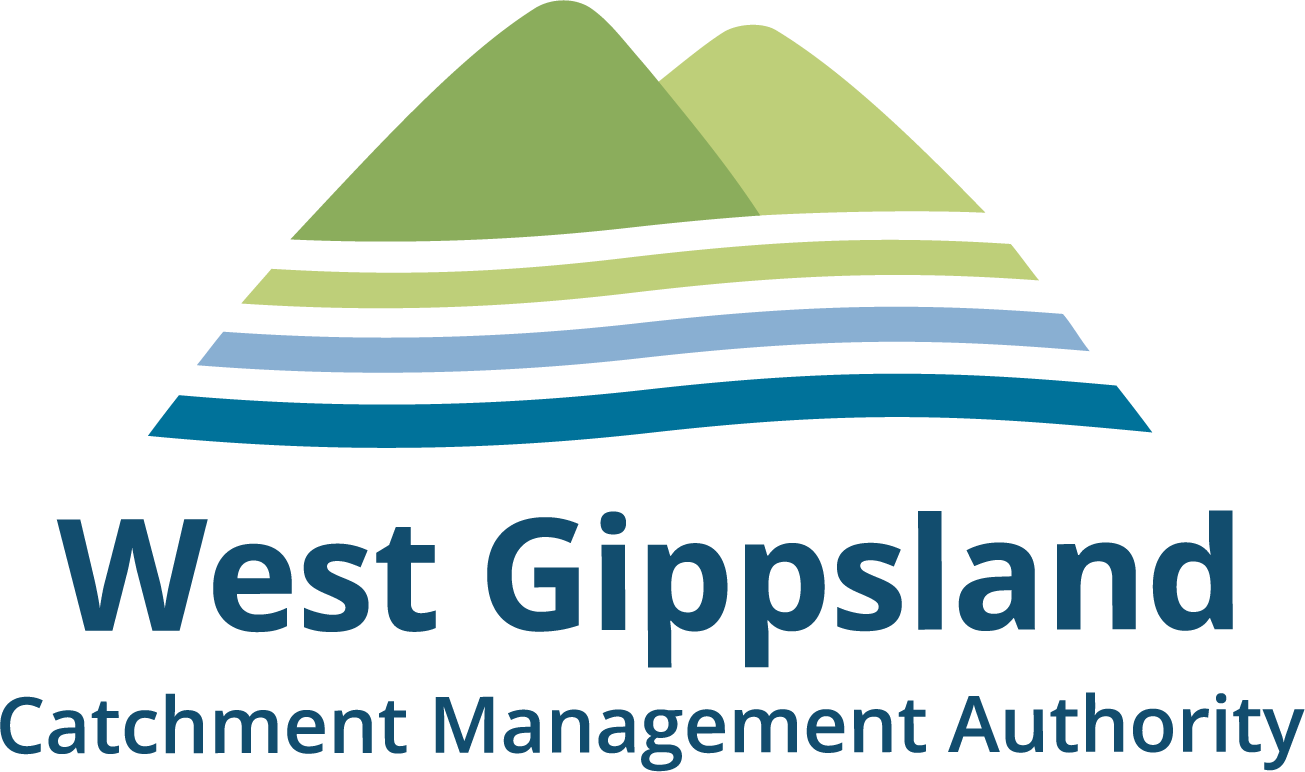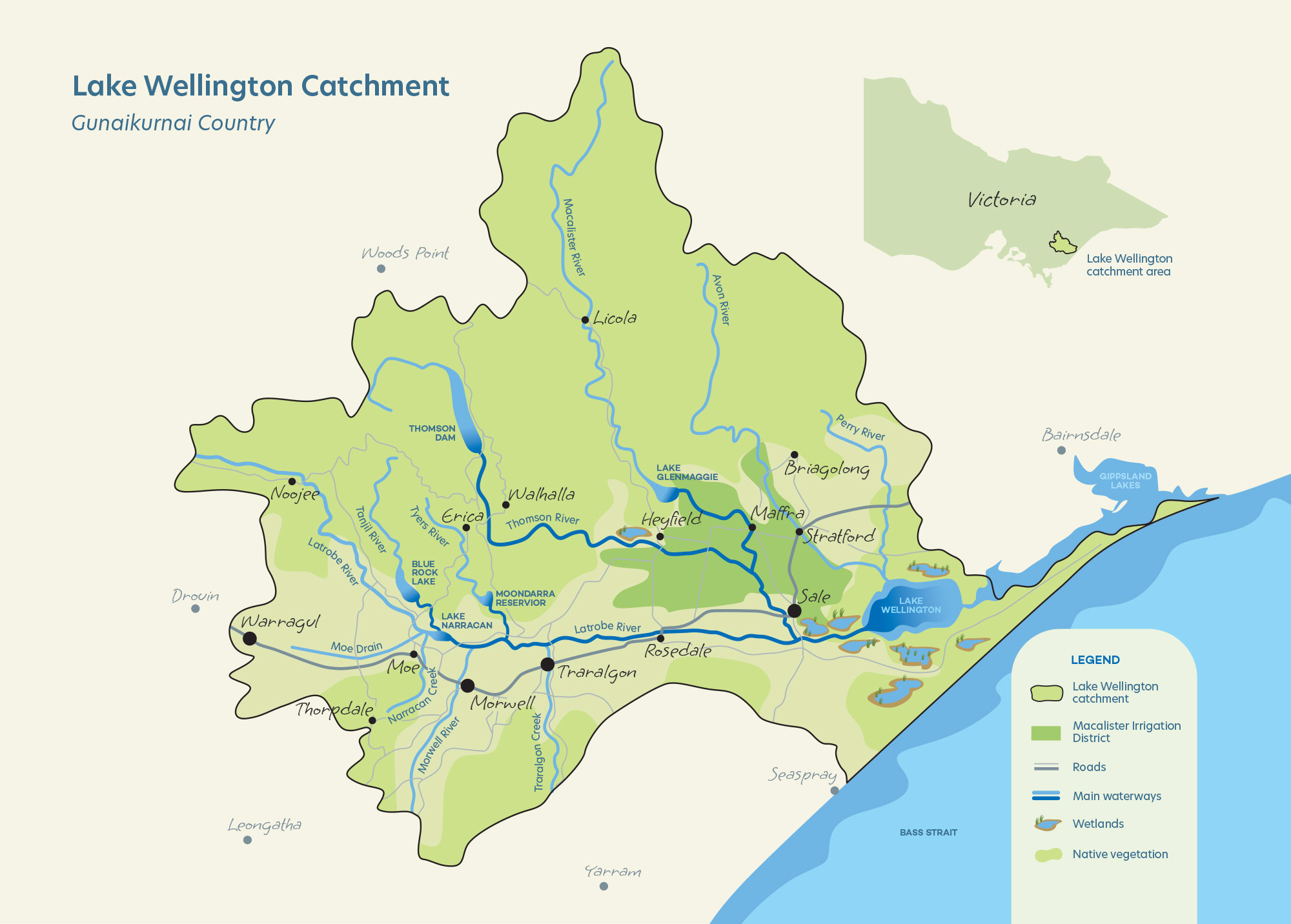Popular Irrigation Incentive program set to benefit even more Gippsland farmers
West Gippsland Catchment Management Authority (the CMA) and Agriculture Victoria (Ag Vic) are pleased to open a new round of farm plan incentives, and for the first time, farmers in Warragul, Thorpdale, Noojee and Perry Bridge and across the entire Lake Wellington Catchment are eligible to apply.
Up to $10,000 per farm is available through the Lake Wellington Irrigation Efficiency Incentive Program to help with the cost of a professionally designed irrigation plan.
“A farm plan sets down on paper the irrigation design for an individual property,” said Alexis Killoran Senior Irrigation Extension Officer from Agriculture Victoria. “This can be a simple irrigation system, right up to a detailed survey and design with integrated farm infrastructure. “The final farm plan provides a comprehensive document to refer to whenever the farm business is ready to implement the planned design.”
“Designing an irrigation farm plan is the first essential step for any irrigation renovation,” said Brad Missen, Irrigation Development Coordinator at the CMA.
“Through the Irrigation Incentives Program, the CMA and Agriculture Victoria will work with you to develop a plan and design that’s tailored to your property and farm business.”
“As part of the farm planning process, the business goals and values, irrigation design, water use efficiency, staged development, and any environmental or statutory requirements are considered and planned for,” Brad explained.
Boisdale beef farmer Nicky Reeves recommends the program: “I had lots of support from the Ag Vic team through the farm planning process. They provided different points of view, and together we found ways to solve the irrigation problems on farm.
With their help I felt comfortable interacting with statutory authorities to make sure everything was compliant and approvable, and the rules and regulations were explained so that they made sense, and I understood why they were necessary.”
The Irrigation Efficiency Incentives Program has been running in the Macalister Irrigation District for 25 years with irrigators helping to retain 46 gigalitres of nutrient rich water, carrying an estimated 23 tonnes of phosphorus, on-farm every year.
“That’s a huge load of phosphorus being kept out of the waterways and the Gippsland Lakes and wetlands and it’s thanks to those farmers who put their hands up to get involved in our sustainable irrigation programs that we’ve been able to see these great results,” said Brad.
We want to continue supporting as many irrigators as possible which is why we’re excited to expand the program outside the Macalister Irrigation District,” said Brad.
“If you’ve never had an irrigation farm plan developed before or it’s been over ten years since you’ve made any irrigation improvements, now is the time to do it.”
Applications are now open with funding allocated on a first-come, first served basis, you can call the CMA for more information on 1300 094 262.
The Lake Wellington Irrigation Efficiency Incentive Program is run by West Gippsland CMA and Agriculture Victoria and funded by the Victorian Government’s Sustainable Irrigation Program.
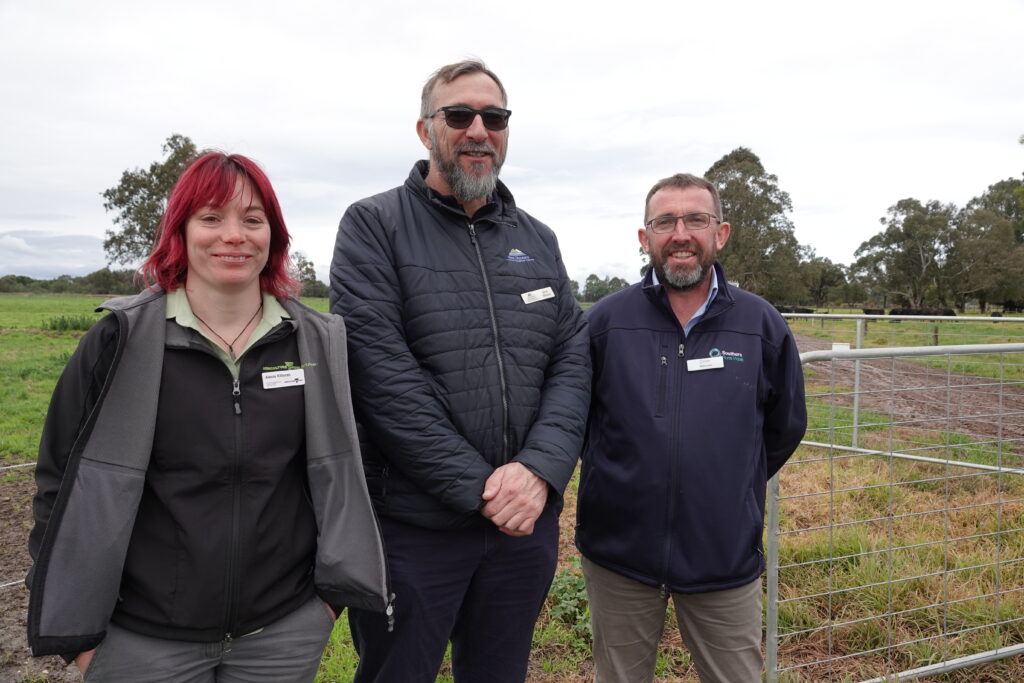
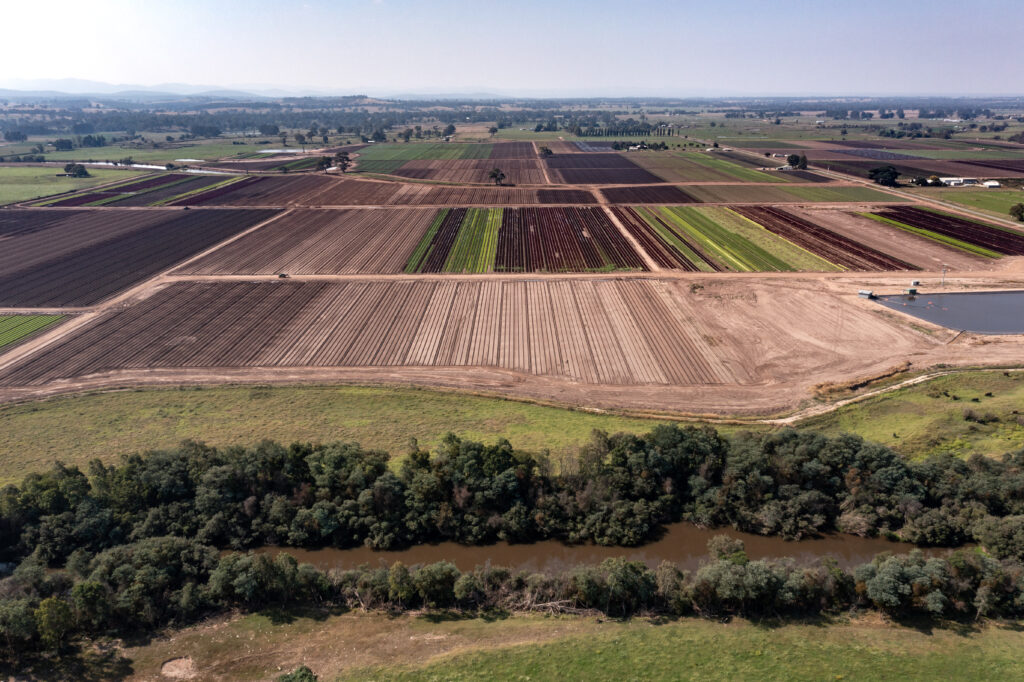
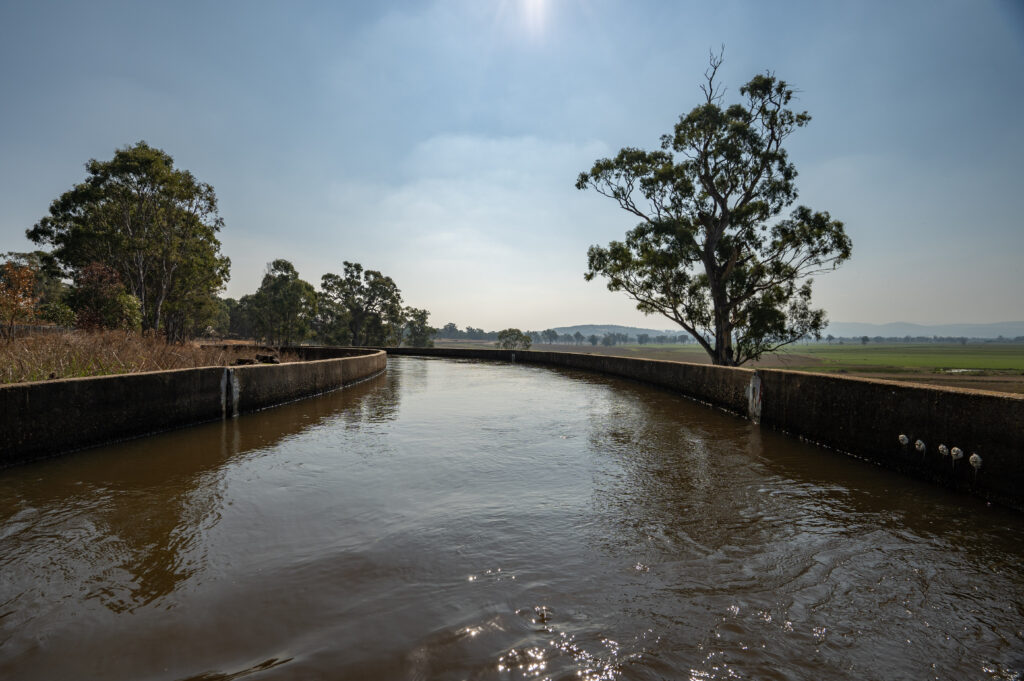
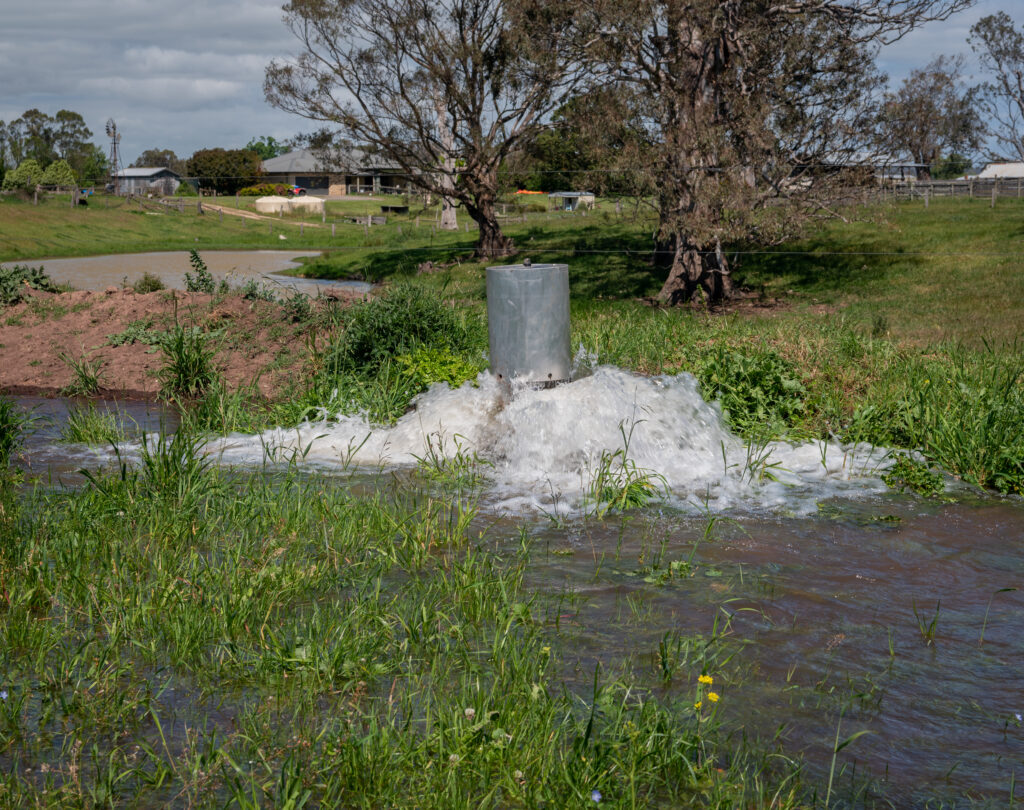
Water for the environment deliveries planned
Please be advised of upcoming Autumn freshes, that will start on or around Friday 11 April 2025 in the following waterways:
- Wirn Wirndook Yeerung (Macalister River)
- Carran Carran (Thomson River)
Releases are dependent on many factors, and can often change, so it is important to keep up to date by checking back on this Current water releases page regularly for the most current information and to sign up for future notifications.
Calling all photographers to enter our “More than just water” photo comp
Grab your phone or camera and get clicking because West Gippsland Catchment Management Authority (CMA) is launching its annual Water for the Environment photo competition with great prizes to be won.
“This year’s competition theme of ‘more than just water’ reflects that the rivers and wetlands across West Gippsland are more than just the water in them,” said Tash Marty-Cripps, Waterways Project Officer for the CMA.
“We know that people will be out enjoying our beautiful rivers in Autumn, and would love to see photos of your adventures and hear your stories.”
The rivers and wetlands across West Gippsland are more than just the water in them. They are special not just because they are home to many plants and animals but for their many other values. Like being places to hike, swim, kayak, fish and camp. They look and smell nice, the water feels cool to our touch. They are also places to learn teach and share stories and where we go to boost our mental health and feel good. They are also important places of financial value for farmers and for local kayaking, fishing and tourism businesses.
“We all benefit from healthy waterways and we are especially proud to support them by delivering water for the environment.”
‘Water for the environment’ is water that is set aside in major reservoirs and carefully released into a waterway to support the health of rivers and wetlands. In dry times it can be used to connect pools and improve water quality, protecting animals such as fish and platypus.
Environmental releases can trigger native fish or eel migration, help waterplants grow, protect waterbirds from predators and improve access to food for fish, frogs and birds. By taking care of the water, we’re also improving these waterways for people to enjoy as well.
The popular annual competition encourages photographers to get snapping and enter photos from the four waterways in of the region that receive annual water for the environment allocations:
- Durt’Yowan (Latrobe River)
- Lower Latrobe Wetlands ie: Dowd Morass, Heart Morass and Sale Common
- Wirn wirndook Yeerung (Macalister River)
- Carran Carran (Thomson River)
Simply capture one or more images of one of these waterways to show us how it’s more than just water to you. There are $1,000 worth of local business association vouchers up for grabs for the winners. It’s free and you can enter multiple times.
The competition opens on Tuesday 1 April and closes at 11:59pm on Wednesday 30 April 2025. Good luck snappers!
West Gippsland CMA is responsible for over 40,000 kilometres of designated waterways across the region and delivers programs for healthy and resilient catchments. All these waterways flow to the Victorian coast, discharging through the Gippsland Lakes, or directly into Bass Strait and the Southern Ocean.
You can learn more about water for the environment in West Gippsland and signup to receive email notifications to keep up to date when environmental flows are scheduled.
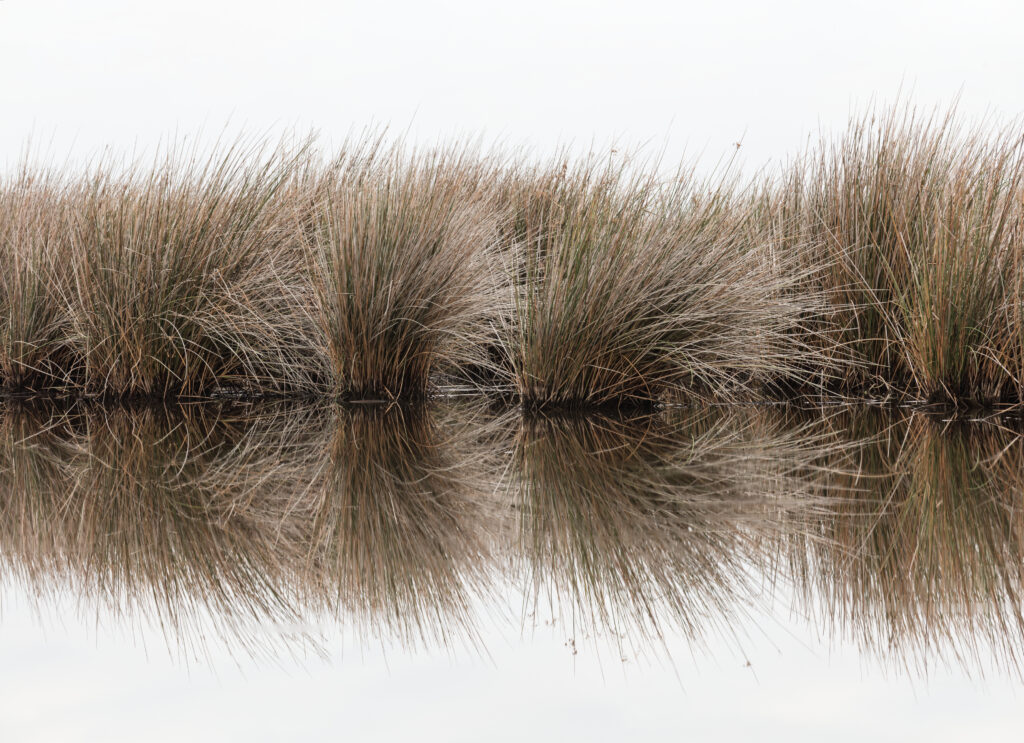
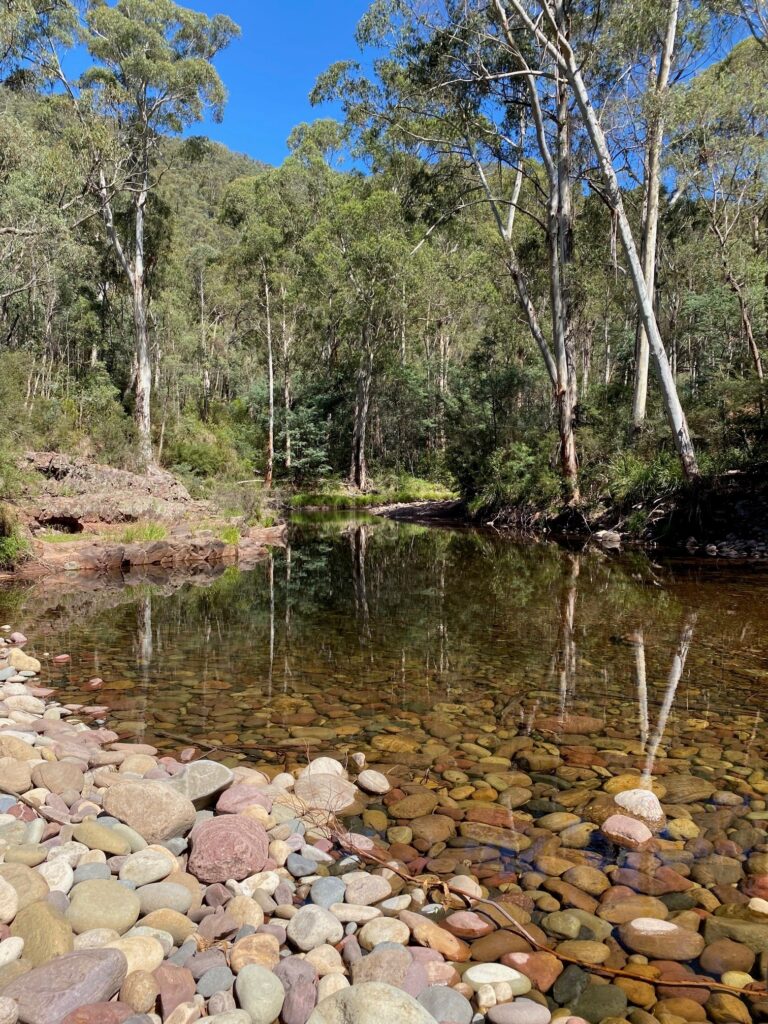
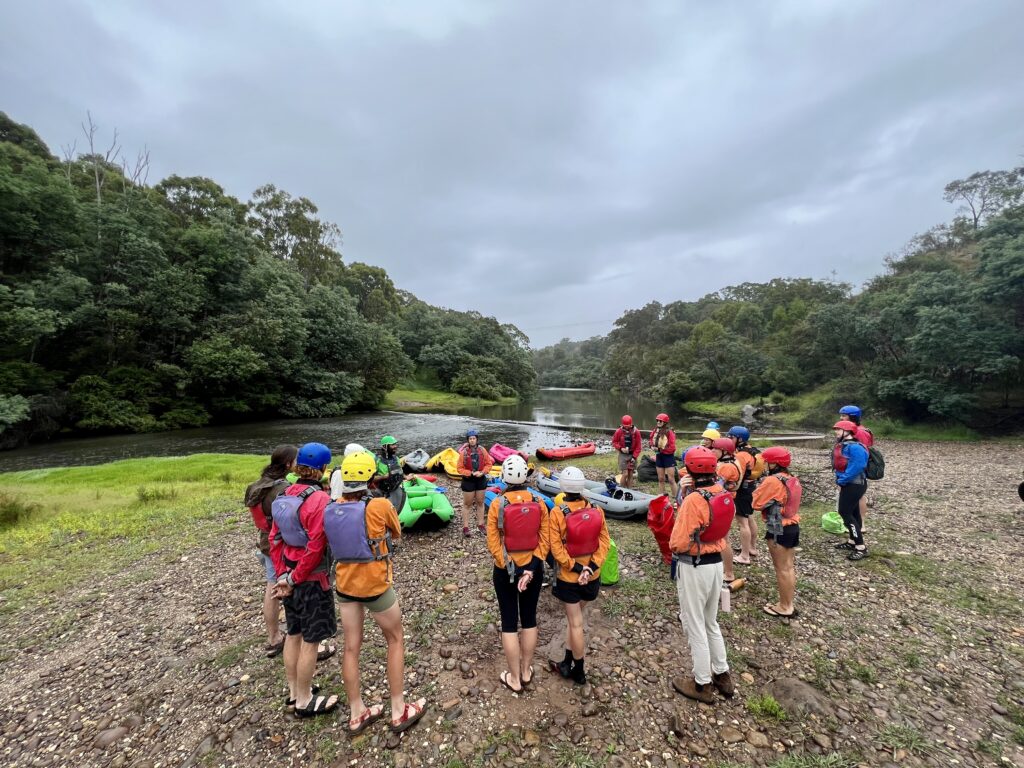
Banner photo – ‘By the banks of the Thomson River’ 📸 Iryna MacMillan
Current Grant Opportunities
Whenever possible we are delighted to be able to support Landcare, landholders and the community with additional funding for projects that help us achieve our shared vision of a healthy catchment.
The following grant opportunities are on offer.
Irrigation Efficiency Incentives for Gippsland farmers
Rebates for irrigation planning and design are now available for farmers in Central and West Gippsland wanting to upgrade or install best practise irrigation systems on their farm.
The CMA and Agriculture Victoria will work with you to develop an irrigation plan and design that’s tailored to your property and farm business.
The rebate program helps with the cost of the plan so you can maximise return on your infrastructure upgrades or investment.
Eligibility rules and criteria are in place for this incentive program, and can be found here.
Page updated 16 June 2025
Irrigation Efficiency Incentives for Gippsland farmers
Overview
Rebates for irrigation planning and design are now available for farmers in Central and West Gippsland.
The CMA and Agriculture Victoria will work with you to develop an irrigation plan and design that’s tailored to your property and farm business.
The rebate program helps with the cost of the plan so you can maximise return on your infrastructure upgrades or investment.
Funding
Rebates of up to $10,000 are available to eligible farms for the following activities:
- New Irrigation Farm Plans
- Updated Irrigation Farm Plans
- Tailored Irrigation Farm Plans
Funding is allocated on a first-come, first-served basis.
Eligibility
In general, you can apply if you have a licence to irrigate and are located within the Lake Wellington Catchment.
The Lake Wellington Catchment spans West and Central Gippsland, and includes Warragul, Noojee, Thorpdale and Perry Bridge as well as the Macalister Irrigation District.
Other criteria:
- The proposed area has not previously had a survey and design completed with the assistance of the Irrigation Efficiency Incentives Program; or
- The existing farm plan for the property is more than 10 years old; or
- You can demonstrate, with confirmation from Southern Rural Water, that the supply system changes (e.g. modernisation of supply channels, pipelines and outlets) have opened up new opportunities for improvements on farm.
Guidelines
You can download a copy of the Landholder Booklet (PDF – 1.2 MB)
Contact
Brad Missen, Irrigation Development Coordinator at the CMA on 1300 094 262.
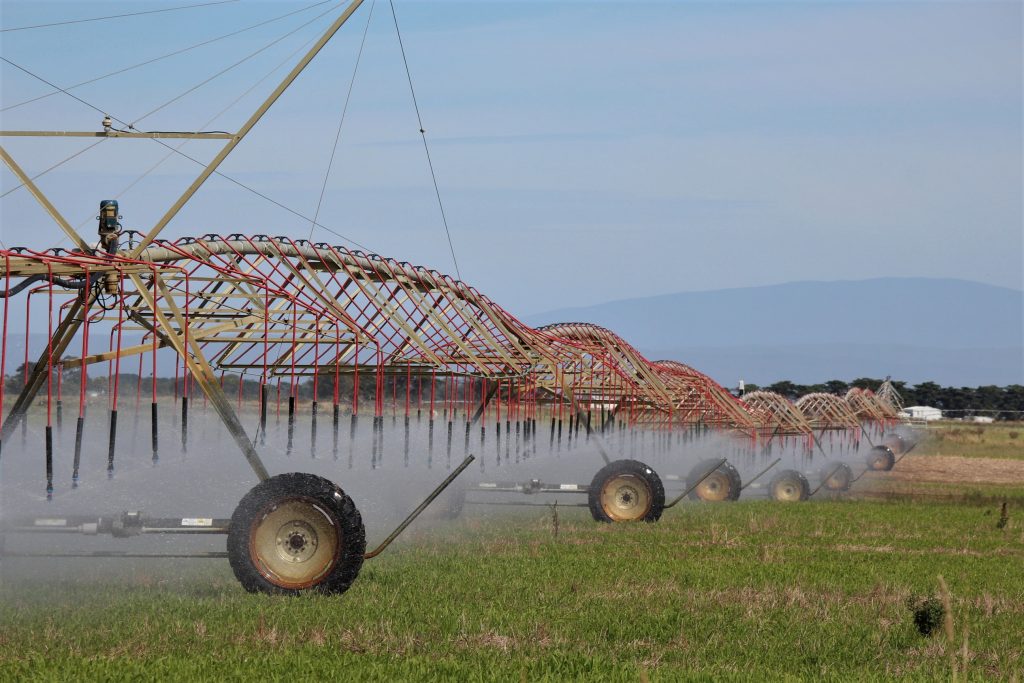
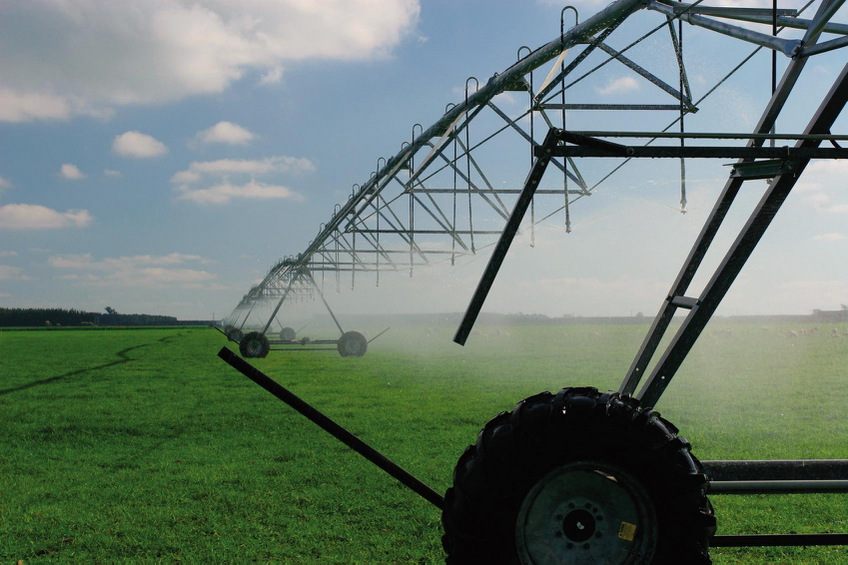
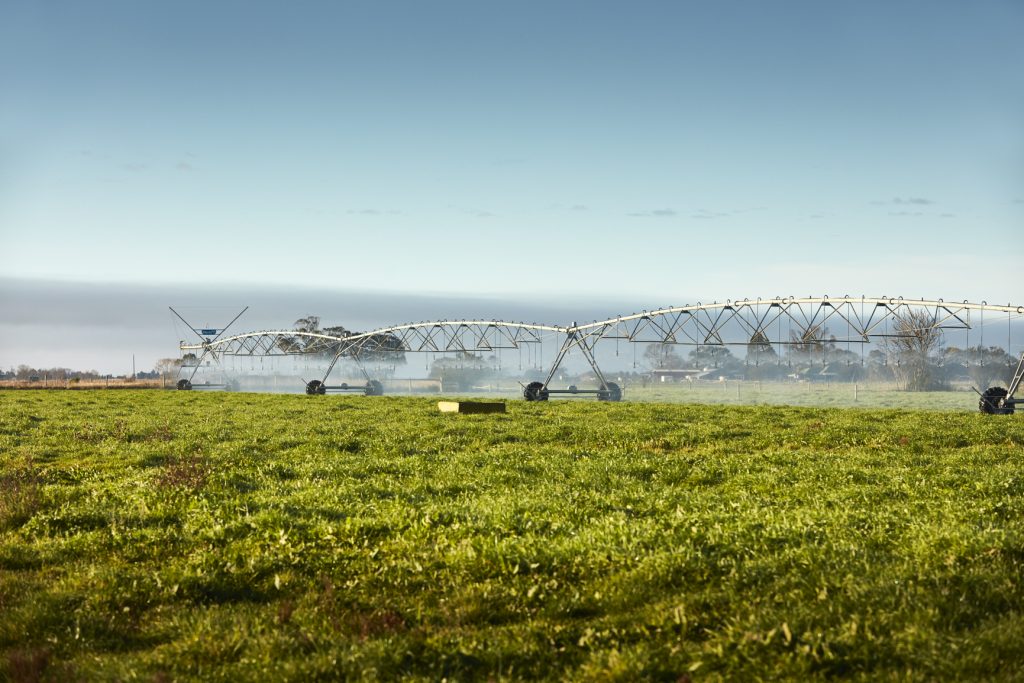
Page updated 11 July 2025
Yarram nursery growing strong
Landcare volunteers in Yarram didn’t have a native plant nursery nearby – so they built their own. Now the thriving community nursery is selling more plants and attracting more volunteers than they could have imagined.
“We sold everything we had on the first day we opened– over 1,000 plants,” said Anna Feely, Yarram Yarram Landcare Network Facilitator. “It was pouring with rain but people still turned up. It was very exciting.”
Opening in late 2024, The Yarram Community Nursery is managed entirely by Landcare volunteers who propagate and care for over 4,000 local native plants including varieties such as Melaleuca ericifolia (Swamp Paperbark), Acacia melanoxylon (Australian Blackwood) and Casuarina (She-Oak). Most of the plants are grown from locally collected seed carefully stored in the network’s extensive seedbank.
The idea for building a community nursery came from needing a supplier of local, native plants for Landcare projects, explained Bronwyn Teesdale, Yarram Yarram Landcare Network Board member and driving force behind the project. “There were no nurseries in the area. The last one closed down a few years ago so when we needed plants for reveg projects, we had travel far away to get them. ” “We already had our own seedbank filled with local seed, so it seemed ideal to start our own nursery right here.”
A Victorian Landcare Grant provided funding for key materials including fencing, a sprinkler system and a polytunnel while volunteers constructed potting tables and helped get the nursery up and running.
“The community support has been amazing,” said Anna. “Yarram Recreation Reserve provided the space to house the nursery and HVP Plantations generously supplied soil and hands-on help. A local timber mill recently dropped off two-tonnes of soil-improving biochar and a donated glasshouse is coming soon so we can start sowing seeds earlier in the year.”
The nursery is not only filling a gap in the area by providing affordable plants for the community, it’s also providing a space for social connection with up to 15 volunteers coming each week to help care for the plants, propagate the seedlings and enjoy a cuppa and chat afterwards.
“I get a real buzz coming here every Tuesday, it’s got such a good vibe,” said Anna. “Our location on the corner of recreation reserve is fabulous because the community can see what we’re doing and drop-in.”
Landcare member Ben Layton agrees, saying the visibility of the site has been a huge bonus. “The community nursery has become a focal point for Landcare in Yarram. People driving or walking past can see us and come and find out what’s happening. Being here has helped us reconnect members. It’s bringing people out of the woodwork and back into Landcare,” she said.
Spurred on by the community’s support, this year Yarram Yarram Landcare Network is aiming to increase its supply from 3,500 to 15,000 plants and convert the garden shed into a hub for Landcare training days and social activities.
Anna’s vision is to be able grow enough plants to supply large-scale revegetation projects. “At the moment we have to rely on grants to purchase plants for revegetation projects, but long term we’re keen to improve people’s properties with plantings grown at the nursery, using local seed suited to the area.”
Marnie Ellis, Regional Landcare Program Officer at the CMA said: “It’s wonderful to see this space thriving and with so much potential and benefit for the community and future Landcare projects.” “It’s another example of West Gippsland Landcare groups bringing positive environmental change to their communities, fuelled by people-power and boosted by funding from the Victorian Landcare Grants.”
The Victorian Landcare Grants support the implementation of Protecting Victoria’s Environment – Biodiversity 2037, the Victorian Government’s long-term plan to protect the state’s environment.
West Gippsland CMA is proud to be appointed by the Victorian Government as the Regional Landcare Coordinator for West Gippsland supporting the region’s five vibrant Landcare Networks:
- Bass Coast Landcare Network
- Latrobe Catchment Landcare Network
- Maffra and Districts Landcare Network
- South Gippsland Landcare Network
- Yarram Yarram Landcare Network
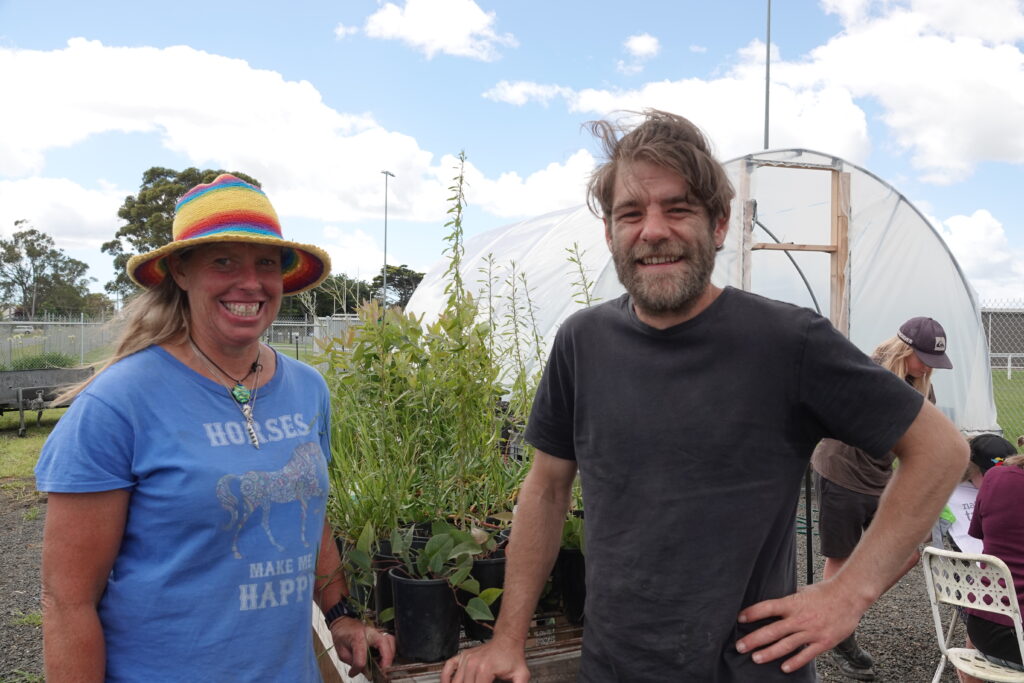
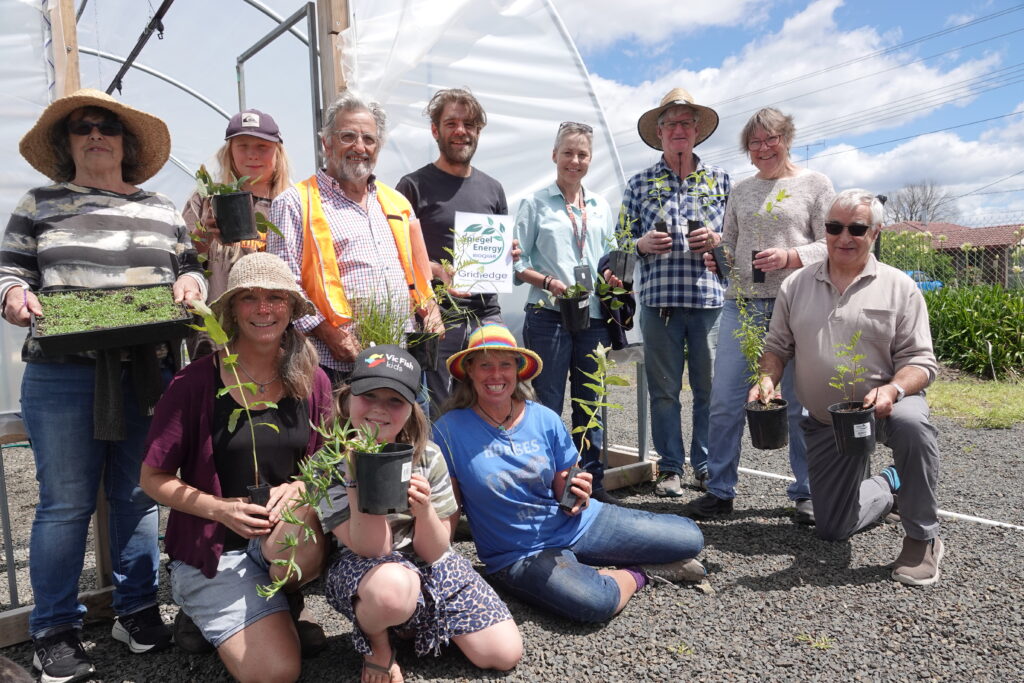
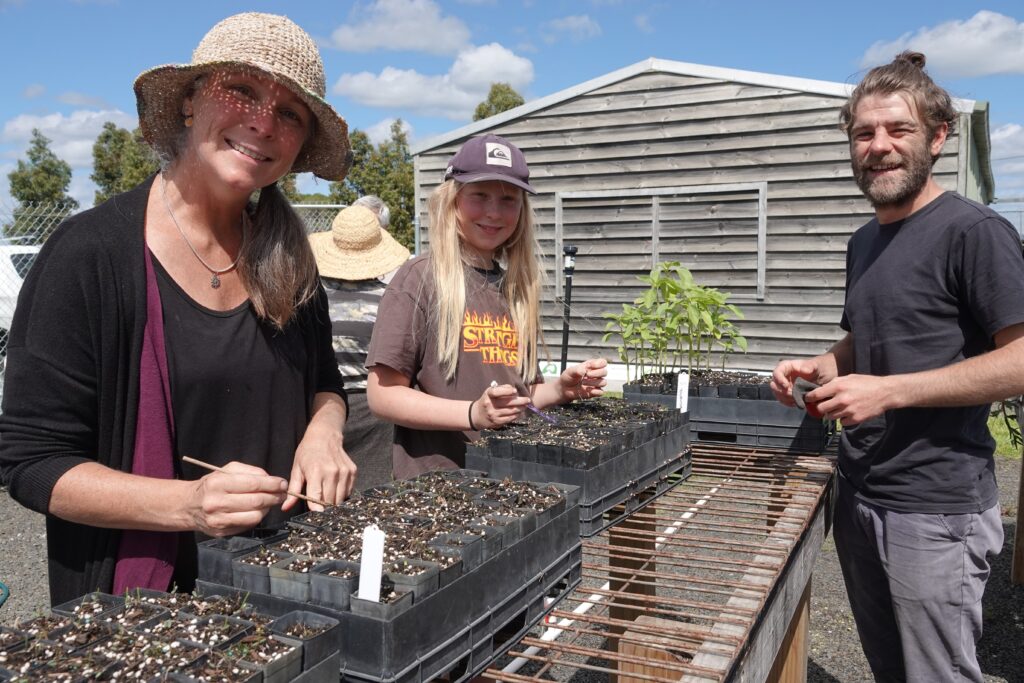
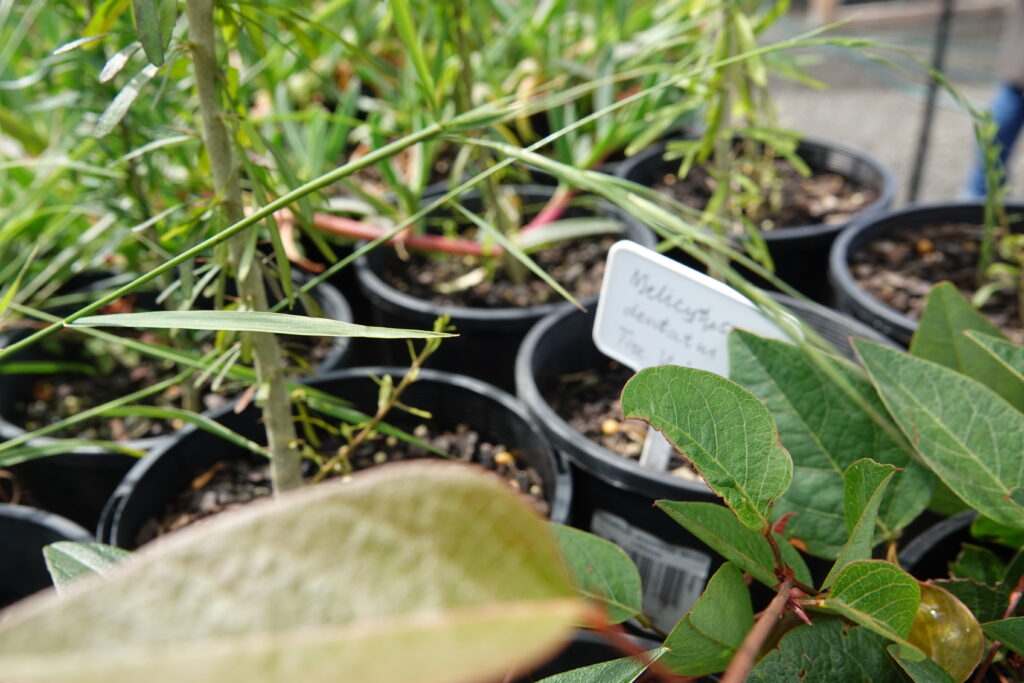
Lasting legacy for Powlett River/Kugerungmome
Collective action and passion for the iconic Powlett (Kungerungmome) catchment was on full display recently as people power drove the planning for the next phase of works to be delivered through strong partnerships and good old fashioned hard work.
There was a lot of love in the room as West Gippsland Catchment Management Authority (CMA), over 20 partner organisations, community members and landholders gathered to plan the next phase of what is known in the business as community driven stewardship or Integrated Catchment Management. The day was made richer with everyone bringing their own unique experiences, perspective, skill and priorities.
“Our best work is done collectively and respectfully with Traditional Owners leading the process,” said Deb Archer, Manager Strategy, Investment and Partnerships for West Gippsland CMA.
“When partners combine knowledge, passion and effort, we get maximum value for money and, most importantly, maximum results for the plants, animals and community who live along the rivers and tributaries from source to sea.”
“We are proud of the achievements of the previous program and are looking to complete at least another 750 hectares of work over the next three years and keep celebrating and showcasing how awesome this community is,” Deb told the group.
To start the conversation, the group reflected on the achievements of the previous Powlett River/Kugerungmome Partnerships Project (2020-2024):
- The delivery of a self-determined project in partnership with Bunurong Land Council Aboriginal Corporation where Traditional Owners set the priorities and pace of the project. This project focussed on reconnecting Traditional Owners to Country, Cultural values and developing partnerships that enable on Country and Community healing.
- Strong and active partnerships were developed that led to knowledge sharing and working together to improve stewardship in the Kugerungmome catchment.
- Over 294 community volunteers engaged through the project.
- 98 hectares of degraded land revegetated and weed control over 225 hectares.
- One baseline aquatic survey for catchment health.
“Everyone worked together and had something to contribute,” said Jack Harriss from Bass Coast Landcare Network who played a major part in the previous project successfully working to reduce foxes to protect wildlife including threatened Hooded Plovers.
Getting out on site was an important part of the day beginning with the group standing on Country at Kugerungmome estuary and reflecting on the commitment to Traditional Owner self-determination that guides the project. Kugerungmome is the original name of the river gifted to the project by the Bunurong Land Council. The story of the river is told in a painting by artist John Winch that is brought to every gathering.
Next stop was a landholder’s property that has been transformed with the help of Bass Coast Landcare Network through funding gained in the previous project.
When Paul and Sonia Grovers bought their 140 ha property the paddocks were barren and creek lines eroded. The couple became “accidental inner city cattle farmers” with a reduced herd of Black Angus Beef cattle to “keep the grass down”.
“It has been absolutely delightful watching the right plants being put in the right place. We are giving 25% of the property back to nature with 37 ha being planted with 25,000 trees. We have also removed weeds and fenced creek lines,” said Paul.
“It’s been a pleasure and we’d love to keep going. It’s great to break even and also see the land recover.”
Actions on this and other properties are contributing to a broader vision held by many of the stakeholders attending.
“Currently 15% of Bass Coast Shire is revegetated and we are aiming for 30% by working together on initiatives such as this,” said Diana Whittington from Bass Coast Shire Council.
“Landholders are key, they inspire others and create a legacy of ongoing stewardship and care on properties,” said Kelsey Tong, West Gippsland CMA.
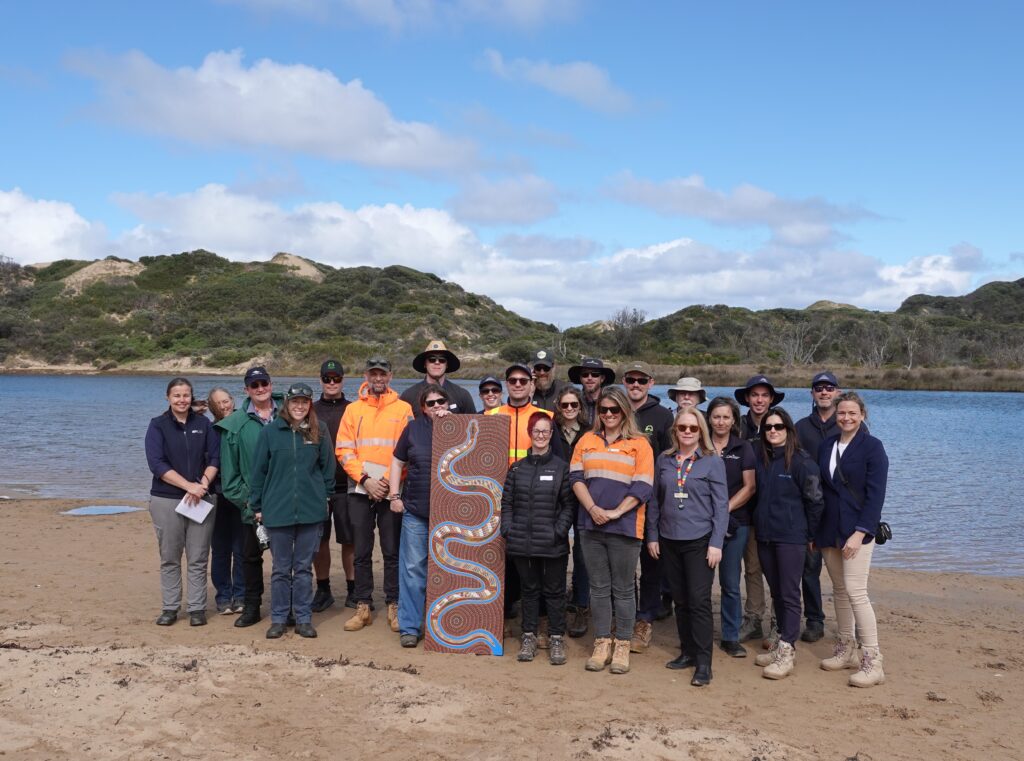
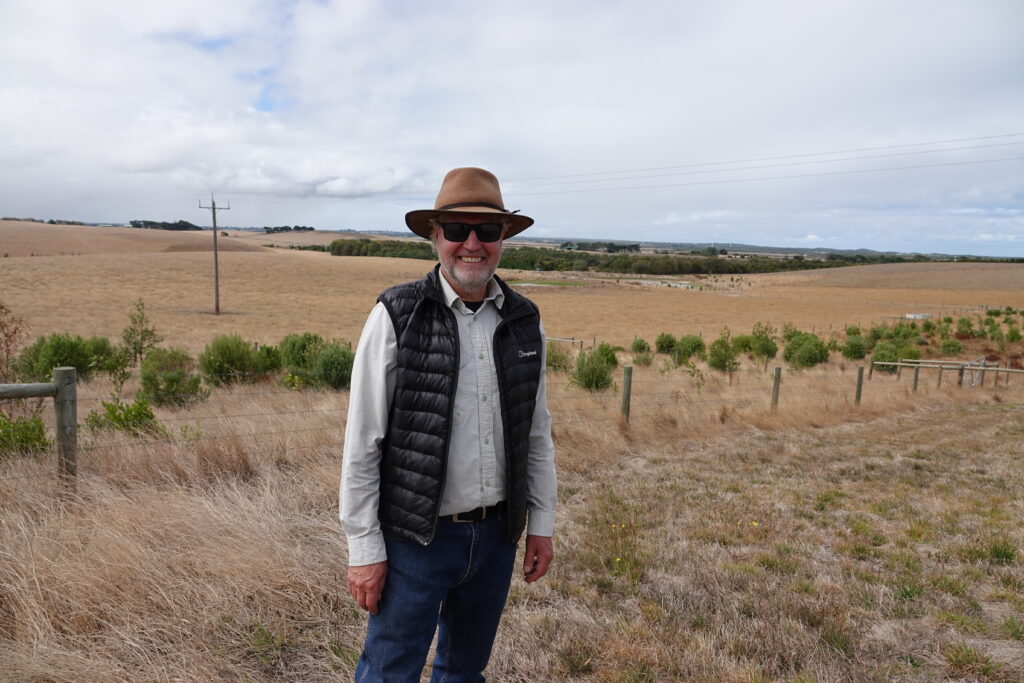
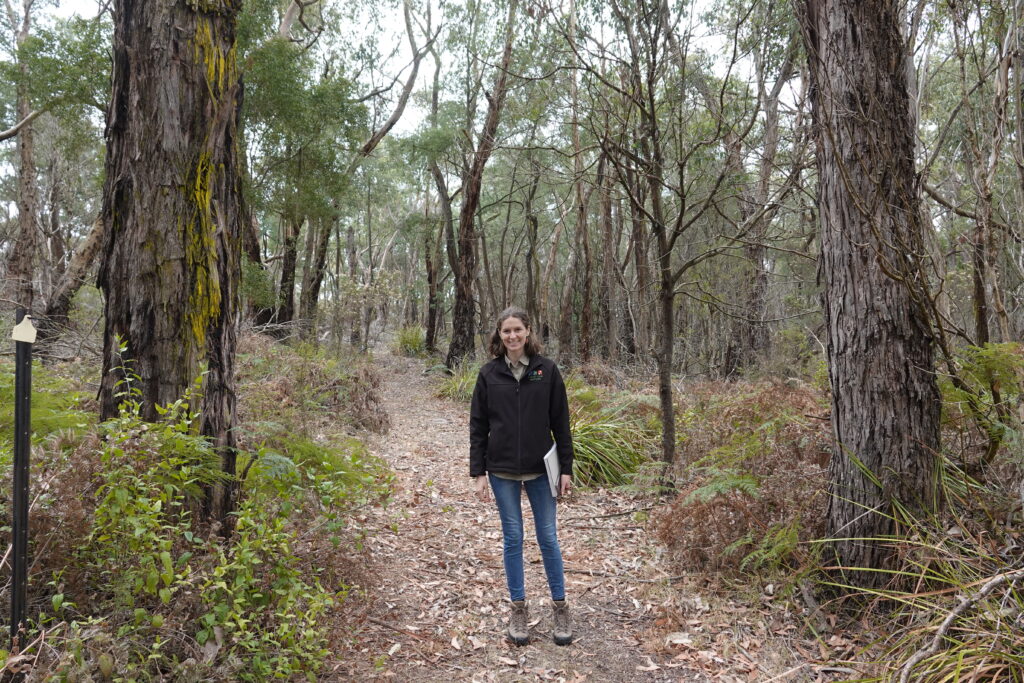
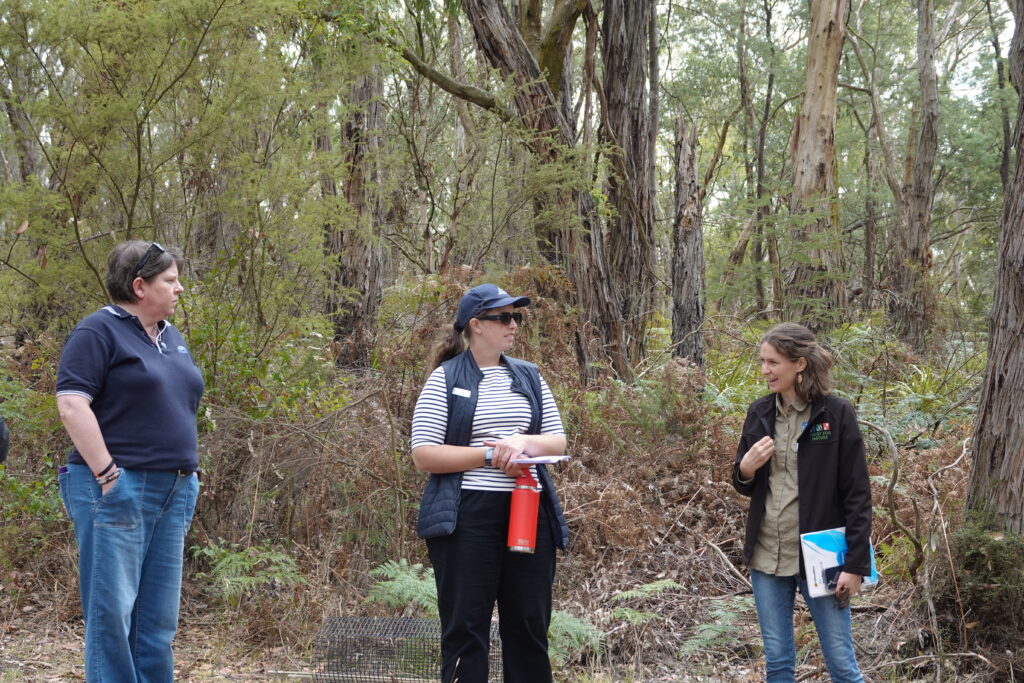
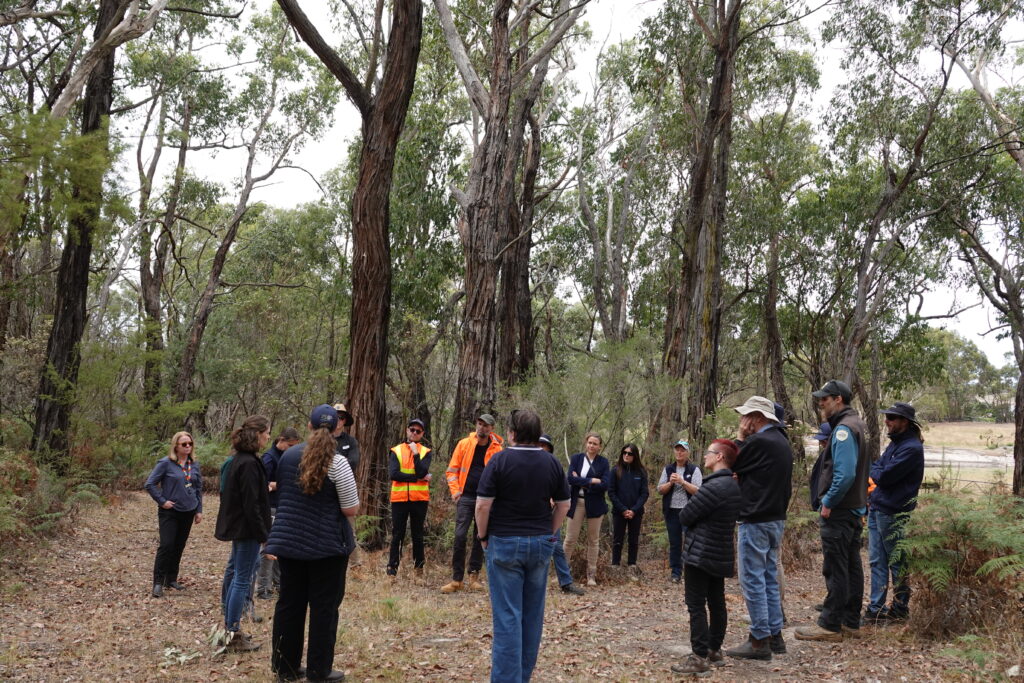
The second site visit was to one of six adjoining bushland properties near Archies Creek. The properties each have a Trust for Nature covenant to protect and enhance the unique connected remnant native vegetation in this part of the catchment.
Trust for Nature began work on the properties in 1990 and their most recent success was to transform this block from being completely covered in the weed pittosporum to uncover and enhance the original eucalypt woodland.
“This was a huge task – the landholders were completely overwhelmed,” explained Lauren Halstead from Trust for Nature.
“It was dark with a huge wall of pittosporum that you could barely walk through, but we took a strategic approach by attacking the female trees first and then the males. The biodiversity returning is also creating opportunities for Traditional Owners to contribute through a planned cultural burn that will further enhance connection to Country.
“We all have similar challenges and, working as a collective, we can make a big difference. It’s quite rare to get this awesome opportunity to be together and explore opportunities – together we can achieve so much more. This next three year program is ambitious and ultimately working towards 20-year healthy catchment goals,” said Deb.
A second partner workshop will be led by West Gippsland CMA to develop the initial shared visions and insights into a detailed program of works to be delivered by partners for the next three years.
This project is funded as part of the Victorian Government’s Our Catchments, Our Communities program aiming to improve the health of waterways and catchments across regional Victoria.
Our role in providing flood advice to keep communities safe
West Gippsland Catchment Management Authority (CMA) is responsible for over 40,000 kilometres of designated waterways across the region and delivers programs for healthy and resilient catchments.
Under Victoria’s Planning Schemes, the West Gippsland CMA is a recommending referral authority not a determining referral authority. Local Government are responsible for issuing Planning Permits and generally support the advice provided by the West Gippsland CMA.
One of West Gippsland CMA’s important roles is to advise the community on Victorian Government’s State Planning Policy and to assist in decision making about flood risk and preparedness to keep Victorian communities safe.
West Gippsland CMA reviews planning applications and advises Councils or individuals of flood risk. This is based on best available modelling and directed by State policy.
Key points around the current situation at Loch Sport
- We acknowledge the current situation around planning approvals in Loch Sport is complex and also that any changes to policy can be unsettling.
- This is the beginning of the process towards updated Flood Overlays in the Wellington Planning Scheme. The process will include input from the community through an independent and transparent engagement process. This will ensure the Wellington Planning Scheme is updated, based on input from the community and with the best available flood mapping that aligns with State Government policy.
- West Gippsland CMA will continue to focus on our role in the process which is following State Government policy to provide flood risk advice without fear or favour.
- Our primary focus is to make sure homes and people are not exposed to hazardous flood conditions.
- We have formed a working group with Wellington Shire Council to guide the next steps to update the Wellington Planning Scheme with the best available flood mapping information.
- We’ll continue to work together to develop a coordinated and strategic approach to the risks associated with increased flooding due to climate change and in particular sea level rise by 2100.
Why is this happening?
- Local government are required to update their Planning Schemes to ensure they contain the best available flood hazard information.
- The West Gippsland Floodplain Management Strategy was released in 2017 and remains unchanged.
- What has changed is that Wellington Shire Council (November 2023) and the West Gippsland CMA (February 2024) have updated their policies in relation to the sea level rise benchmark to align with State Planning Policy. The sea level rise benchmark set by State Government determines the flood level used by the West Gippsland CMA when assessing planning permit applications.
- The change to State Planning Policy 13.01-2S came in September 2021 with Planning Scheme Amendment VC171 introduced into all Planning Schemes across Victoria. This required an 0.8 metre sea level rise be considered for planning decisions across Victorian coastal areas.
- Most local government areas across Victoria’s coast have implemented the change to State Planning Policy into their planning decisions.
Autumn Estuary update
Estuaries are dynamic and often in a state of transition. This Autumn is a great example of an environmental zone that is in flux.
Across West Gippsland, estuaries are super important, working hard to soften the transition as rivers meet the sea. Many of the region’s estuaries open and close to the sea as conditions change and this is a natural and important process.
This Autumn, Bourne Creek, Merriman Creek, Kugerungmome/Powlett River and Wreck Creek Eastern Branch Estuaries are closed to the sea.
These closures are part of a natural process. During times of low river flows and moderate-high tides and swells they can stop flowing to the ocean because a sand bar forms across the entrance.
These estuary closures are good for the river because they provide calm, stable waters for fish to feed and breed, help the native plants and increase areas for birds to feed.
Under natural conditions, when an estuary is closed, water levels rise over time and eventually erode the sand bar – this usually happens with high rainfall in winter and spring. These natural openings are important because they reset the estuary and floodplain by flushing out nutrients and salt.
Estuary closures sometimes impact the environments and infrastructure we rely on like farmland, recreational assets, roads and bridges.
So, to keep things safe for us, an artificial opening may be needed.
Artificial openings are when a channel through the sand to reconnect the estuary to the ocean is undertaken manually. This usually happens during times of lower flows and are not as effective as a natural opening at flushing out nutrients and salt from the estuary.
West Gippsland CMA’s role is to manage the approvals if an artificial opening is needed. This task is complex, and something not done lightly. We do a thorough risk assessment to minimise possible impacts to the environmental, cultural, social and economic values of the estuary.
In the long-term, we are working with landholders, land managers and Traditional Owners towards a vision of reducing the need for artificial openings at sites along the Bunurong and Mullungdung coast (Kilcunda to Seaspray) and letting natural processes flow at sites like Kugerungmome/Powlett River that are loved and highly valued by the community.
At Kugerungmome/Powlett river estuary, we are working with partners to enable the mouth to open and close naturally which is the ultimate vision. If this vision can be achieved it will have many benefits, not just for the estuary and its floodplain but also for the socio-economic values such as tourism and recreational opportunities.
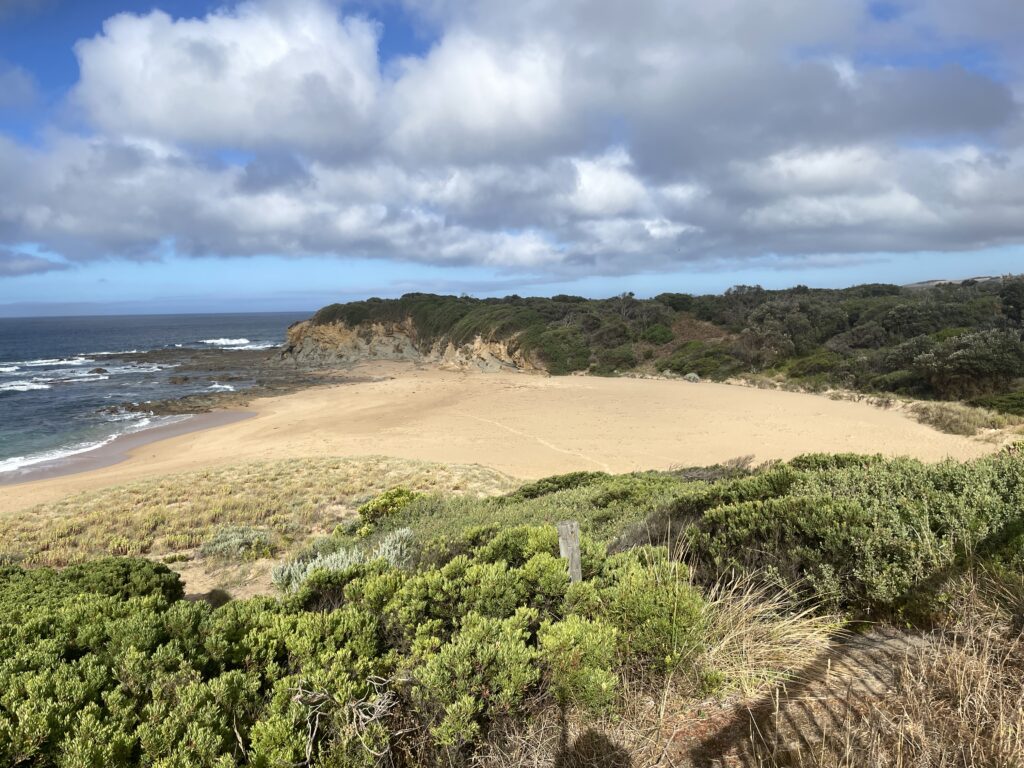
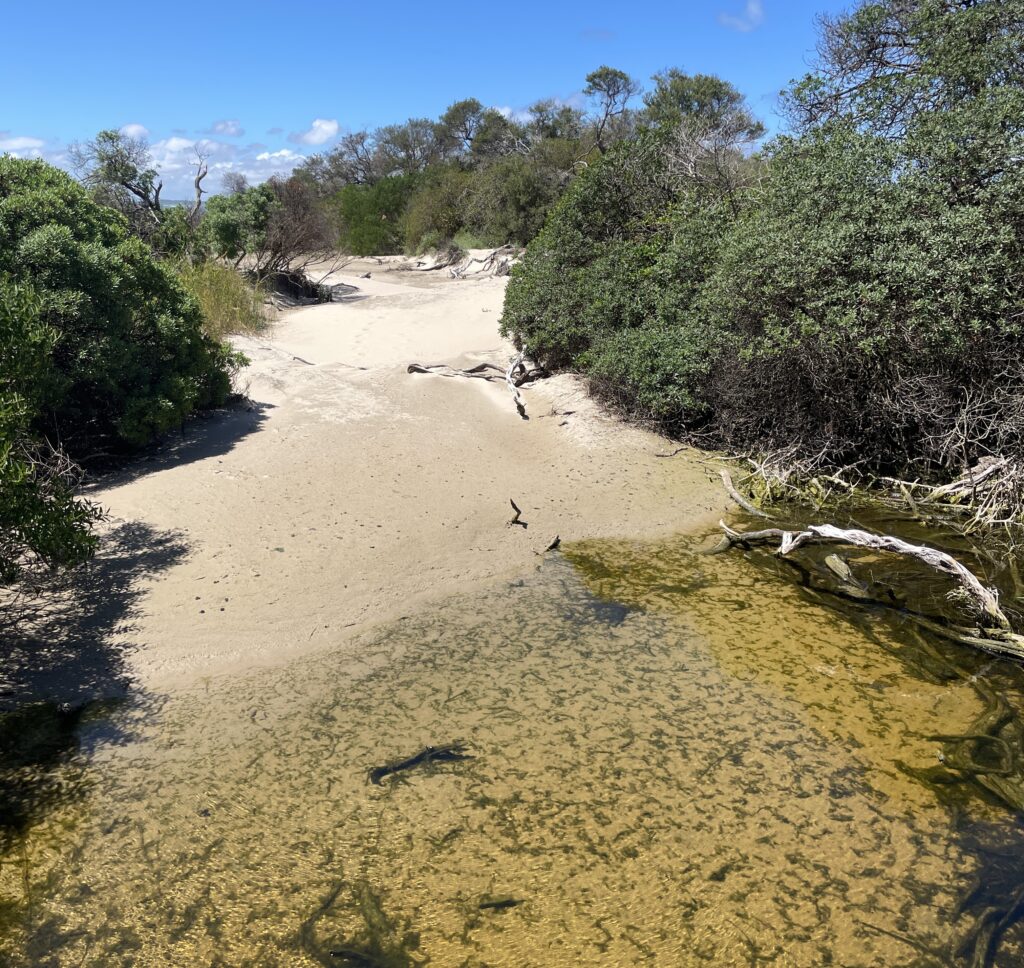
2025 Victorian Landcare Grants open for West Gippsland
The Victorian Government is helping volunteer groups and networks protect and restore Gippsland’s precious environments with Minister for Environment Steve Dimopoulos announcing today that the 2025 Victorian Landcare Grants are open.
There is $3.55 million available to support volunteers in caring for the State’s landscapes and biodiversity and $337,250 available for the West Gippsland CMA region.
The grants are open to environmental volunteer groups and networks, including Landcare groups and networks, Friends groups, Conservation Management Networks, Committees of Management, Coastcare groups and Aboriginal groups.
Project grants of up to $20,000 are available for on-ground works and community education projects focused on enhancing the natural environment, including native vegetation and wildlife, waterways and soils.
Support Grants of up to $500 are available to assist with administrative and operational expenses of groups and networks.
“Landcare has a long and proud history in the region, right across the catchment. From Archies Creek in the west over to Munro in the east, passionate volunteers are delivering local and landscape-scale projects to protect our region’s environment,” said CEO of West Gippsland CMA, Martin Fuller.
“In 2024, Landcare groups across the region received funding of $337,250 for 21 projects and 26 support grants for initiatives such as safeguarding remnant forests, restoring swampy woodland to protect threatened species, developing a community nursery and inspiring the next generation of Landcarers.
“The continued work of Landcare volunteers across the catchment is inspiring and vital to the CMA’s goal of healthy and resilient catchments. I look forward to seeing what projects will come out of the 2025 grant process.”
West Gippsland CMA is proud to be appointed by the Victorian Government as the Regional Landcare Coordinator for West Gippsland supporting the region’s five vibrant Landcare Networks:
- Bass Coast Landcare Network
- Latrobe Catchment Landcare Network
- Maffra and Districts Landcare Network
- South Gippsland Landcare Network
- Yarram Yarram Landcare Network
The grants will help achieve targets set in Protecting Victoria’s Environment – Biodiversity 2037, the Victorian Government’s 20-year plan to protect our environment and native species.
Applications for the Victorian Landcare Grants closed on 16 April 2025.
Stories from 2024 Grant recipients
Yarram Yarram Landcare Network’s community nursery
Landcare volunteers in Yarram didn’t have a native plant nursery nearby – so they built their own using funding thanks to funding from a Victorian Landcare Grant.
“The grant helped us turn our idea for a community nursery into a reality. Now we’re selling more plants that we could have imagined and attracting more members into Landcare. It’s been amazing,” said Anna Feely, Network Facilitator at Yarram Yarram Landcare Network.
Open since October 2024, The Yarram Community Nursery is managed entirely by Landare volunteers who propagate and care for over 4,000 local native plants including varieties such as Melaleuca ericifolia (Swamp Paperbark), Acacia melanoxylon (Australian Blackwood) and Casuarina (She-Oak).
The nursery is not only filling a gap in the area by providing affordable plants for the community, it’s also providing a space for social connection with up to 15 volunteers coming each week to help care for the plants.
Gippsland Intrepid – the next generation of Landcarers
Victorian Landcare Grants are helping the next generation of Landcarers protect and restore the environment – all while having epic adventures across Gippsland.
Gippsland Intrepid Landcare organise activities that combine fun and friendship with environmental work such as kayaking while mapping weeds, hiking to monitor pest species and tree planting festivals, all while supporting Landcare groups and networks across the region, helping them connect young people to Landcare.
A highlight of the event calendar is the hugely successful Plant & Dance events where the Gippsland Intrepid team partner with local Landare groups and private landholders to plant thousands of plants on site in one day with a festival atmosphere followed by live music, DJs and food.
Thanks to funding from the Victorian Landcare Grants, the group has now run three hugely successful Plant & Dance events where hundreds of volunteers – aged 18 to in their 30s – have helped plant over 10,000 trees.
“Plant & Dance sums up what Gippsland Intrepid is about – doing fun stuff and helping the environment,” said Kelsey Tong, co-founder of the group.
